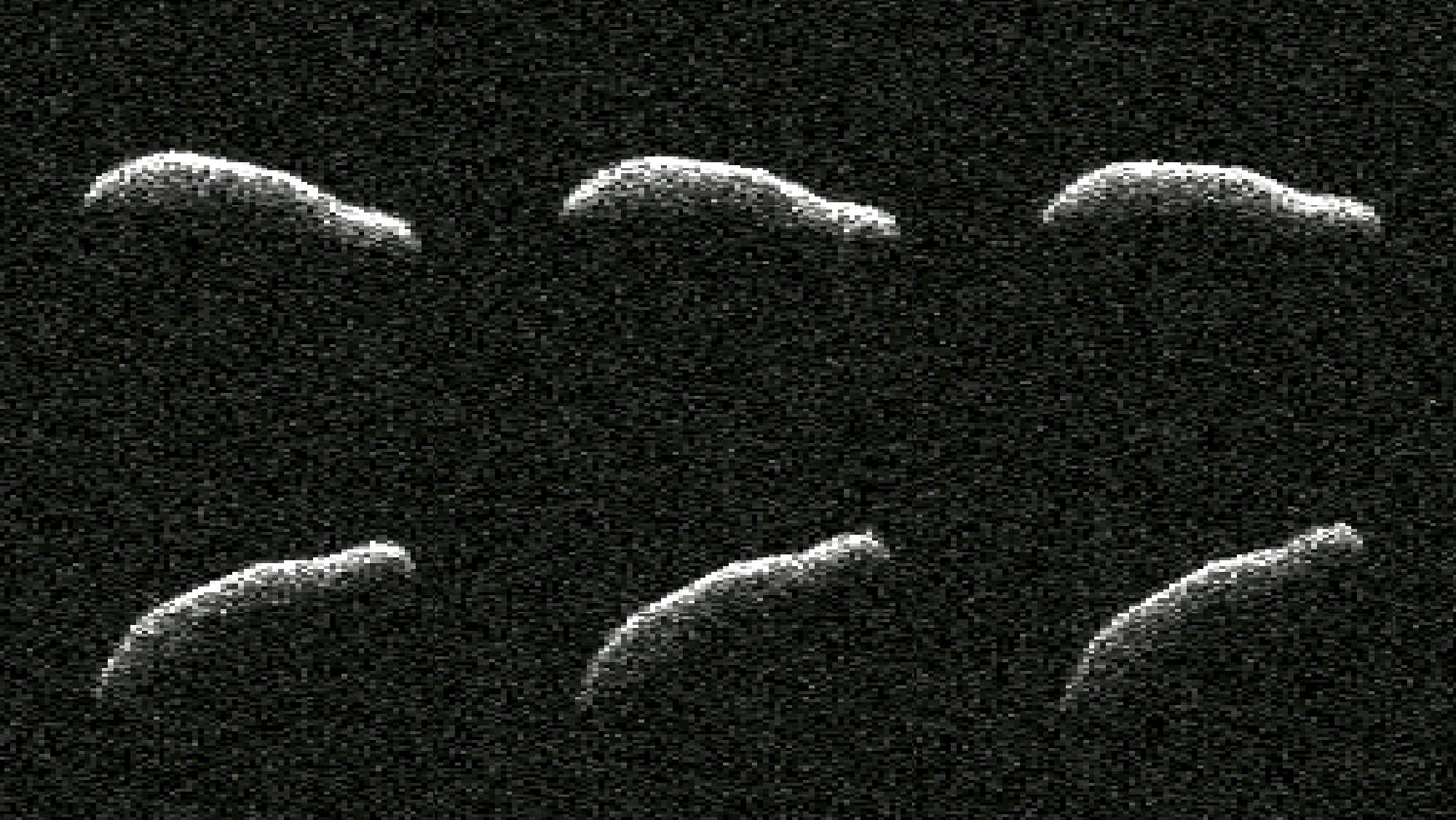Early in February, an asteroid estimated to be at least 1,600 feet long breezed past Earth at roughly 1.1 million miles out. While it never threatened our planet, per se, the asteroid 2011 AG5 was particularly interesting to NASA’s asteroid watchers due to its oblong shape. Now, NASA has shared images of the peculiar asteroid for all to see.
2011 AG5 passed Earth on February 3. As it did, scientists with NASA’s Jet Propulsion Laboratory in Southern California observed the asteroid to gather better measurements and data about the peculiar space rock. These observations have since proven invaluable because they have helped scientists determine 2011 AG5’s size, rotation surface details, and shape.
Since its discovery, 2011 AG5 has been a poster child for asteroids, mostly due to the possibility that it could one day impact Earth. However, continued observations of the oblong asteroid’s orbit, as well as these new NASA images of the asteroid, show that it won’t come anywhere close to our planet for a long time. As such, it poses no real threat to humanity for years and years to come.

Still, these new NASA images of the asteroid have a lot of information to provide for scientists, especially those searching for planet-killer asteroids hiding in our cosmic backyard. At roughly 1,600 feet long and 500 feet wide, this asteroid is estimated to be around the same size as the Empire State Building. It was discovered in 2011, and has continued to wow scientists since.
But what makes this most recently imaged asteroid so intriguing for NASA scientists? According to Lance Benner, a principal scientist at JPL, this is the most elongated asteroid that NASA has ever observed. NASA has observed quite a few asteroids – 1,040 to be exact. Its oblong shape, as well as its narrow width, make it especially unique compared to the other asteroids we’ve seen thus far.
While the image that NASA captured might be grainy, the data that it managed to uncover while observing this asteroid cannot be understated. We now know that it rotates slowly and that it has several small-scale features. It also has different colored regions, which could indicate different types of material making up the asteroid we see in the new NASA image.







